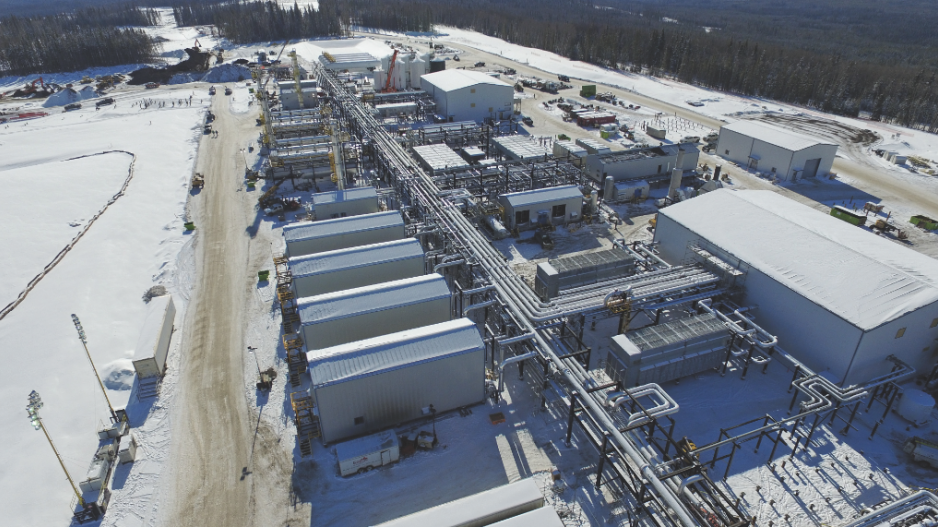Most British Columbians by now know what LNG stands for – liquefied natural gas.
But perhaps they should become more familiar with a couple of other acronyms: NGL (natural gas liquids) and LPG (liquid petroleum gas).
After all, it is NGL, not LNG, that appears to have been driving billions of dollars of investments in new gas processing plants in British Columbia recently.
Construction has yet to start on a single LNG plant in B.C. Meanwhile, companies like Veresen Inc. (TSX:VSN) and AltaGas Ltd. (TSX:ALA) have been investing billions of dollars in new gas processing plants in the Dawson Creek-Fort St. John region.
AltaGas and its partners recently shelved their Douglas Channel LNG project in Kitimat, and on March 11 Veresen’s Jordan Cove LNG project in Oregon was denied a permit, in part because the company had no firm buyers.
So why are both companies still moving ahead with multibillion-dollar investments in new gas processing plants in northeastern B.C.?
The answer is that the Montney Formation in northeastern B.C. is so rich in both gas and natural gas liquids (light oil, condensate, butane and propane) that it makes natural gas production there more economically viable than in most other producing regions, despite falling gas prices and increasing competition from the U.S.
“While Canadian production has been decreasing and exports have been decreasing, B.C. has actually been growing,” said Geoff Morrison, manager of B.C. operations for the Canadian Association of Petroleum Producers.
“If you look at LNG prices globally, they’ve really come off a lot, challenging economics for any of the projects, whereas liquids … maintain a fairly healthy spread, compared to North America,” said Jess Nieukerk, AltaGas’ director of finance and communications.
As part of an agreement with the Cutbank Ridge Partnership (Encana and Mitsubishi), Veresen is currently building two new gas processing plants in the Dawson Creek area – the Sunrise and Tower plants – at a capital cost of $1.5 billion.
Earlier this month, Veresen and Cutbank Ridge approved the construction of a third plant, the $930 million Saturn 2, bringing the total investment to about $2.5 billion.
“These are going to be some of the biggest gas plants in Western Canada,” said Steven Paget, an analyst with FirstEnergy Capital Corp.
See also: |
Meanwhile, AltaGas plans to begin operations at its $325 million Townsend gas processing plant near Fort St. John about the middle of this year.
The Townsend plant is part of about $1 billion worth of investments AltaGas is planning to make in B.C.
The company is planning a new propane export facility at the Ridley Island terminal in Prince Rupert, at a cost of $400 million to $500 million. AltaGas expects to make a final investment decision later this year.
The company also has plans to build a new liquids separation facility near Fort St. John, at a cost of $100 million to $150 million. That plant would process natural liquids into products like propane and condensate. (The biggest market for condensate is Alberta, where it is used to dilute oilsands bitumen.)
Although a new market for gas from an LNG industry would increase demand and prices for natural gas producers, it appears the investments being made in the Montney are not necessarily dependent on it.
“I think what we’re seeing sanctioned is not dependent on LNG,” Paget said.
Earlier this month, Dulles Wang, a gas analyst for Wood Mackenzie, told a Canadian Energy Research Institute conference that he thought Petronas’ Pacific NorthWest LNG will proceed and be producing by 2022.
“But even without Petronas’ project, we still think the WCSB [Western Canadian Sedimentary Basin] production will grow because you still have a lot of low-cost gas in the Montney,” Wang said.
Western Canadian gas production has been falling, due to competition from the U.S., but Wang predicts that by 2025, a “second wave” of North American LNG projects will drive up the demand for western Canadian gas.•
– With files from the Daily Oil Bulletin




